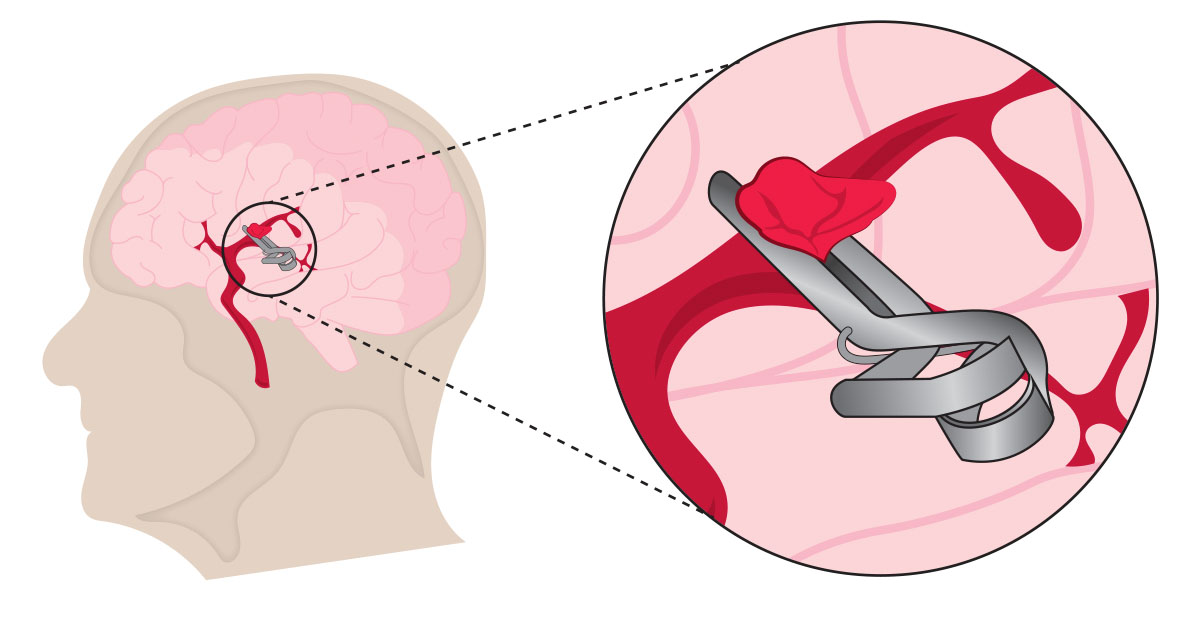This procedure is used to help treat aneurysms by preventing blood flow using a small metal clip:
Aneurysm Clipping

What is Aneurysm Clipping?
Aneurysm Clipping is a procedure used to treat an aneurysm. This is accomplished by attaching a small, metal clip to the aneurysm's base, preventing blood leakage.
Who needs Aneurysm Clipping?
An aneurysm is a weak area in the wall of a blood vessel that causes bulging, dilation or ballooning of the blood vessel. Because aneurysms often rupture or leak, clipping may be suggested to avoid a potentially fatal rupture.
What are the steps in Aneurysm Clipping?
Preparing for the Procedure
Prior to the procedure, an anesthetic is applied and a portion of the scalp may or may not be shaved. To prevent movement during the procedure, your head may be secured in place.
Gaining Access to the Aneurysm
An initial incision in the area of the scalp above the aneurysm. Your surgeon then folds back the soft tissue in order to expose the skull. One or more small holes are then drilled into the skull. A section of bone is then freed by your surgeon Using a saw, your surgeon will then free a section of bone referred to as a "skull flap." The skull flap is then removed and stored. The dura, which is the membrane around the brain, is then opened, to gain access to the brain's blood vessels. Once access has been gained, your surgeon will carefully expose the aneurysm with surgical instruments.
Clipping the Aneurysm
Once the aneurysm has been exposed and isolated from the tissue surrounding it, your surgeon will use the small, metal clip to block the flow of blood into the aneurysm.
Ending the Procedure
Once the clip has been placed, the skull flap is then returned to its place, where your surgeon will anchor it into place with plates and screws. The flap of skin is then folded back by your surgeon, who seals it with surgical stapes or sutures.
After Surgery
Typically, patients who undergo a craniotomy stay in the Intensive Care Unit, or ICU, for several days following the procedure. Recovery time varies depending on the aneurysm's location and size.


